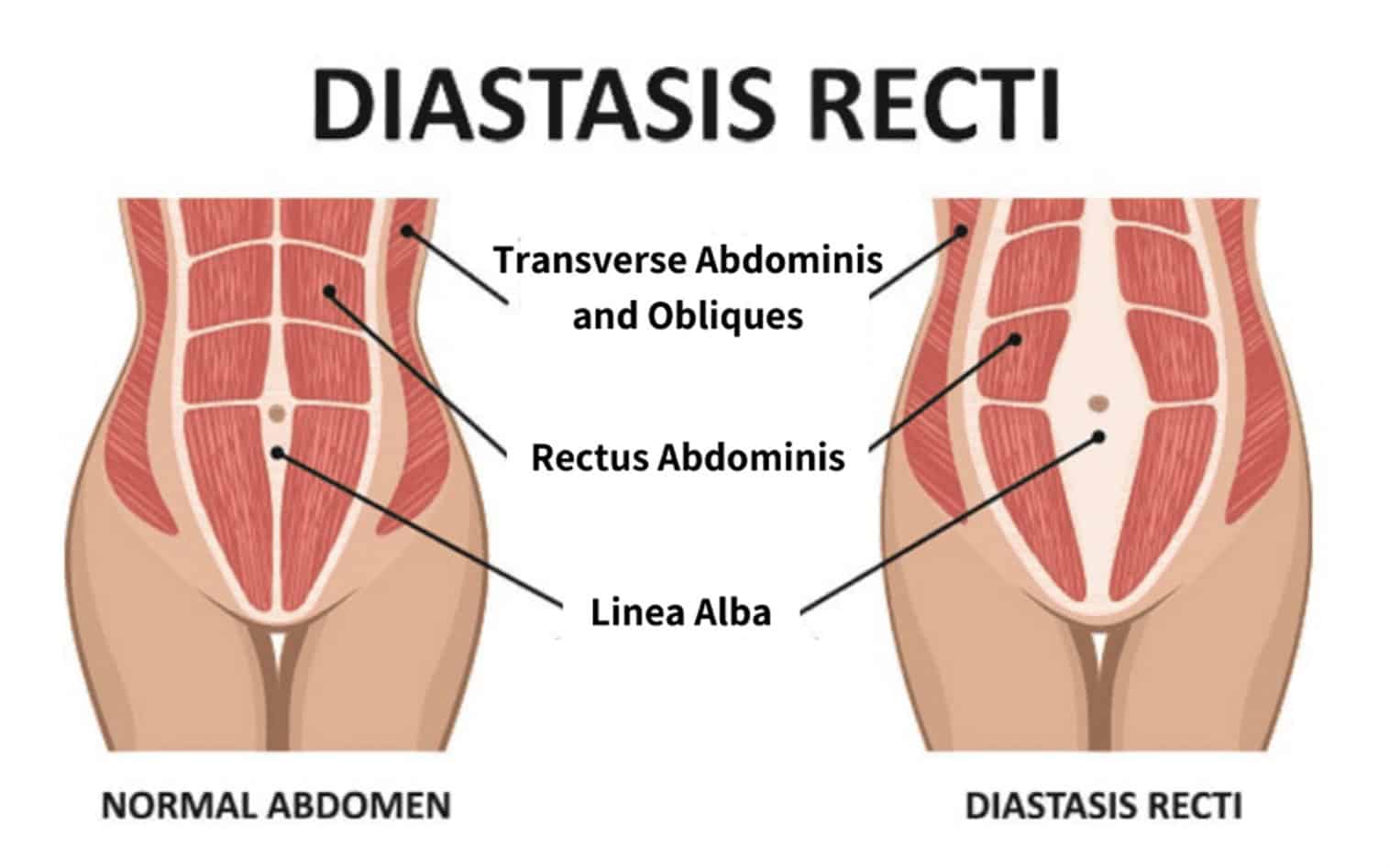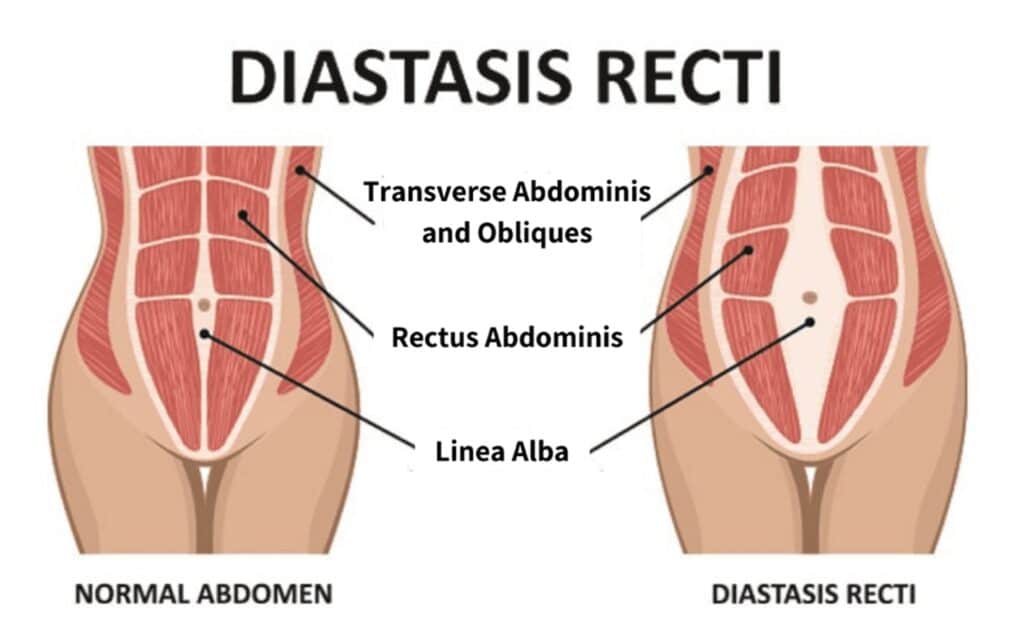No one talks about Diastasis Recti post-partum

Most fitness programs try to entice new mothers with losing their pregnancy belly, but rarely does anyone talk about the real concerns post pregnancy viz. re-strengthening the core muscles and healing any damaged tissues. Not many are aware that around two-thirds of women experience a diastasis recti or separation of the rectus abdominis during pregnancy, which can persist post-partum as well.
Diastasis Recti
Diastesis rectus abdominus is an impairment of the neuromyofascial system, impacting the tensile strength and the compliance of the line alba, resulting on suboptimal alignment and biomechanics, leading to a failed load transfer and the creation of a gap in the abdominal fascia.
In simple terms, it is the separation of the right and left abdominal wall (rectus abdominis) due to the weakening of the connective tissue holding them together. During pregnancy, the hormones released in the expectant woman’s body, make the tissues lax, to allow for the growing fetus. The baby in the belly presses down on the pelvic floor and outwards into the abdominal wall. If the intra-abdominal pressure increases beyond a certain level, the rectus abdominus can separate across the midline of the torso, like a zipper coming undone. Here, the zipper being the linea alba. This separation of this fascial sheet results in the protrusion of the rectus abdominis muscle
Research has shown almost all women have a diastasis rectus at about 35 weeks of gestation and it may persist in about 40% women post-partum, wherein it may not recover except with surgery. There is no evidence of any risk factors that can prevent it.
Self-test for Diastasis Recti
To check if you have diastasis recti, lie down with your knees bent and feet on the floor. Do an abdominal curl and gently press your fingers on your belly to check for a gap between the abdominal muscles. If there is a gap of more than 2 fingers, it is considered a diastasis rectus.

Symptoms
The separation of the fascia creates a loss of anatomical integrity of the wall and in a lot of people, it may not pose any problem. But if it does, it mainly results in high intra-abdominal pressure, urinary incontinence, or constipation. Inadequate dissipation of the intra-abdominal pressure IAP can cause overloading through the thoracolumbar fascia onto the lower back. And hence, lower back pain.
Some of the common postural discrepancies of diastasis recti is doming of the rectus abdominus, poor abdominal control, and a rib flare. Another aesthetic issue can be that of a floppy abdomen and stretch marks.
Case study
On of our clients Carol had two pregnancies in 2005 and 2009 respectively. During her first pregnancy itself, she had suffered a diastasis rectus. She couldn’t lose the pregnancy belly even after her second pregnancy, after ten years of doing gym, yoga, and walking.
She was extremely depressed due to her flabby tummy. The stress had an effect on her skin, as well. The worst effect it had was on her marriage and family life, leading to her divorce. She has developed rheumatoid arthritis along the way, and it was causing sacroiliac joint, hip, and lower back pain. Her symptoms kept worsening and she was in a lot of pain. Finally, fifteen years after her first pregnancy, she finally decided to get surgery to repair the abdominal separation. A year post the surgery, she came to Moushu’s Pilates studio to gain her body confidence back.
As we always do, we customized a program to suit her issue. Taking it extremely slow, we started with a really low-grade abdominal strengthening and low back exercises, moving on to hip mobility exercises. Within 3 months of doing Pilates with Moushu’s Pilates studio, she felt her self-esteem returning. Over time, she became super strong and motivated.
Pilates worked on much more than just her physical appearance. The beauty of Pilates is the mind-body connect that not only makes you appreciate your body, quirks and all, but also makes you mentally stronger.
Check out the video below to understand which exercises can help with regaining core strength post diastasis recti. And if you want to experience the magic of Pilates, contact us.
